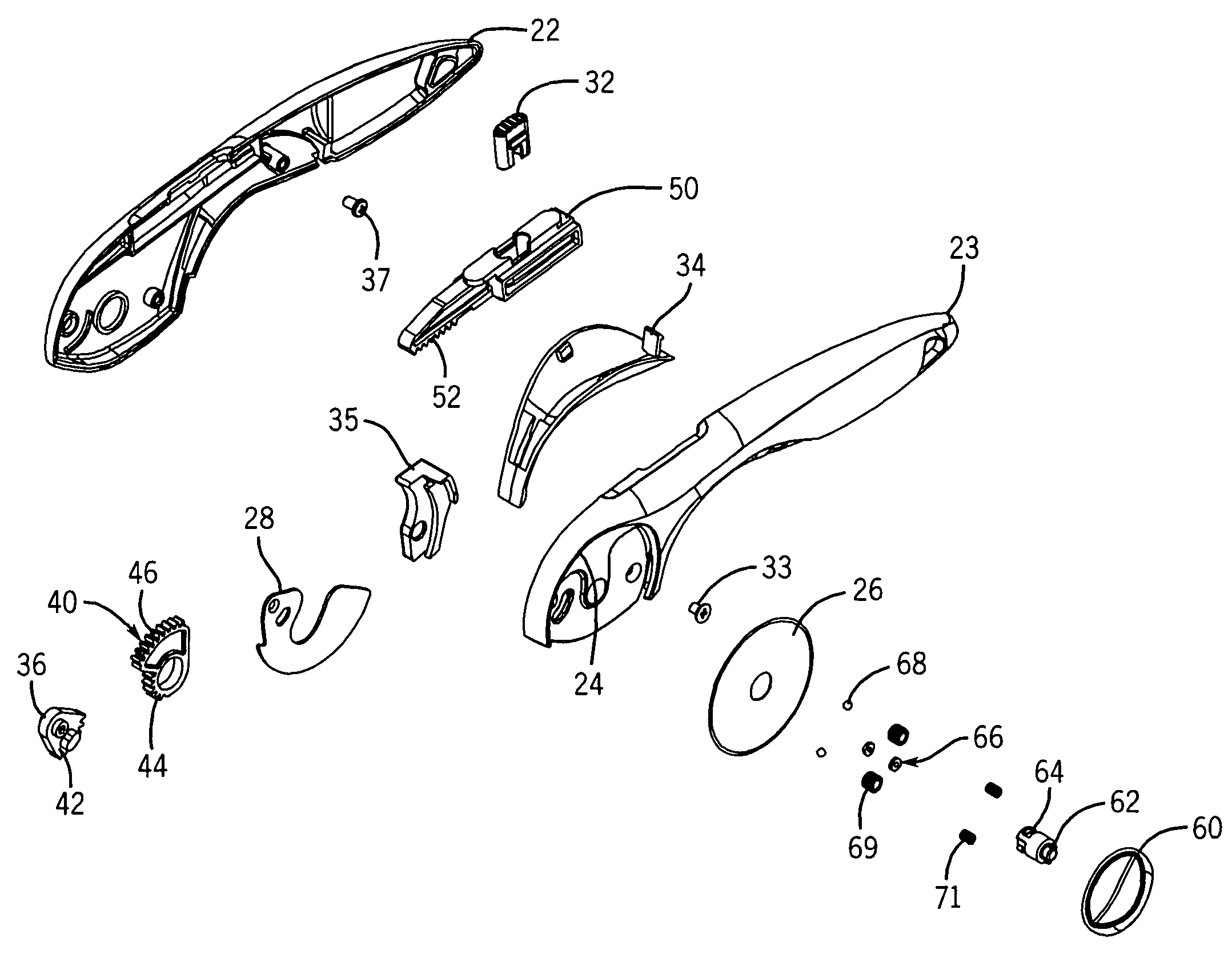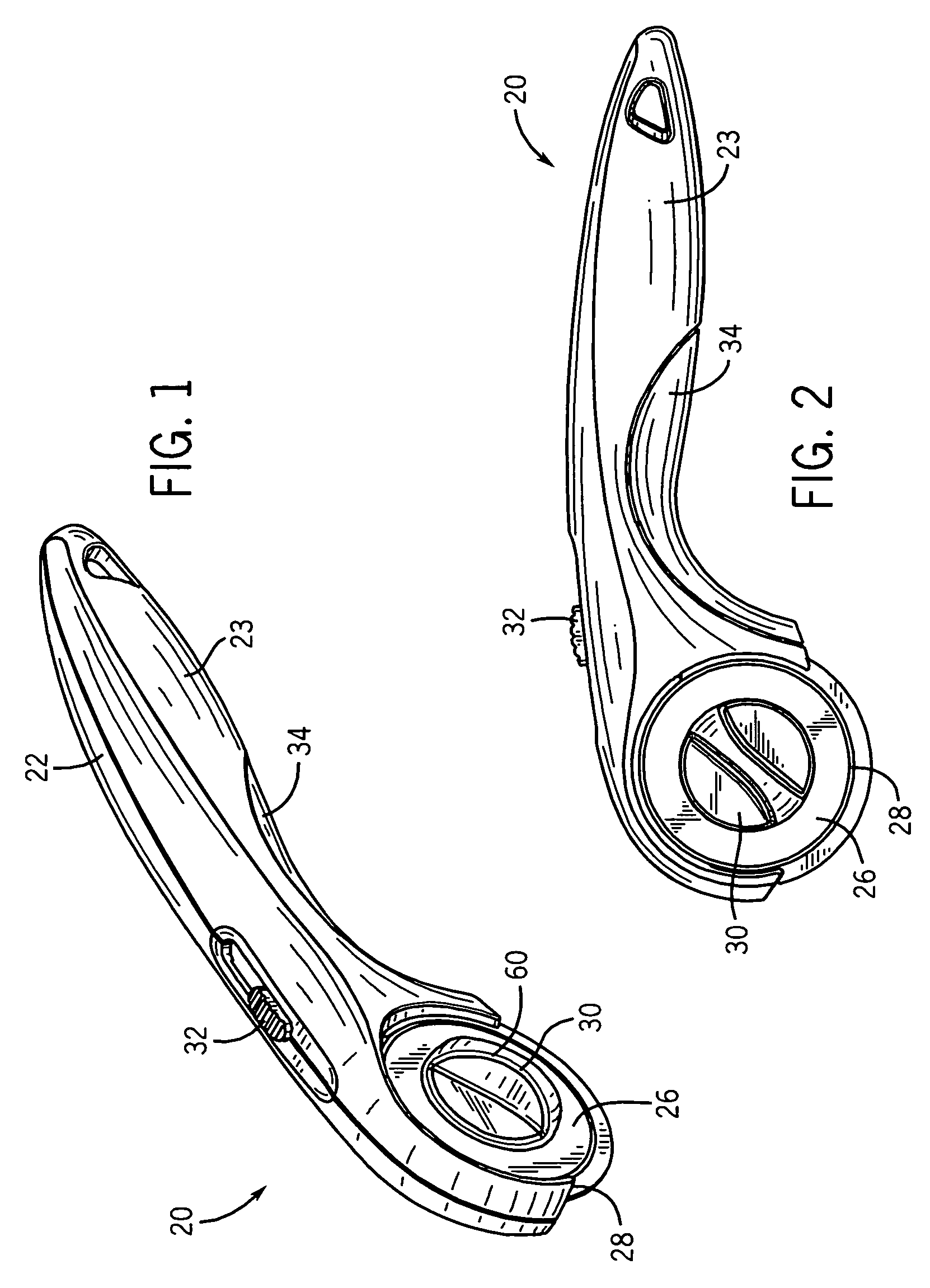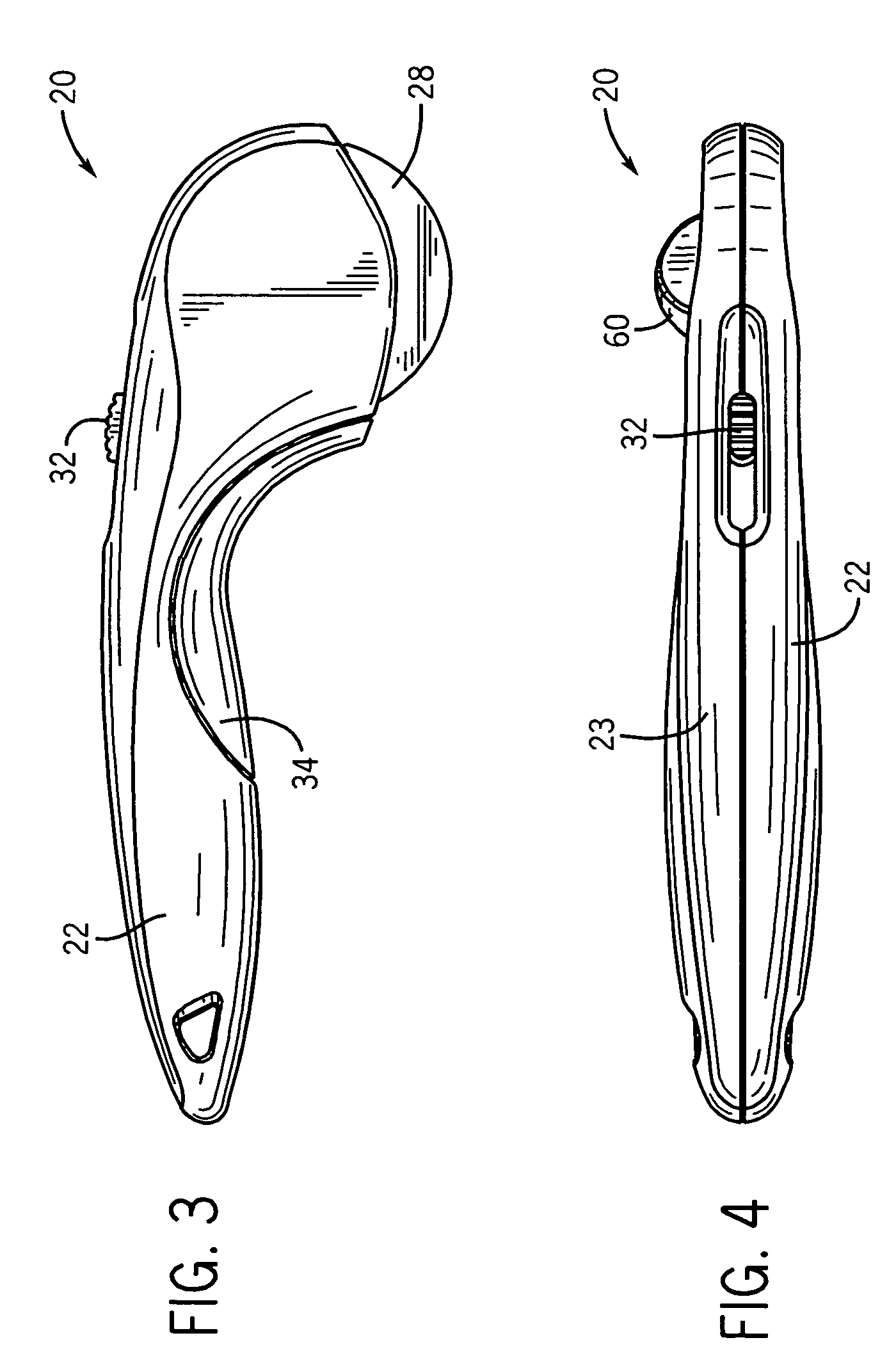Cutting device
a cutting device and cutting head technology, applied in the field of cutting devices, can solve the problems of rotary cutter operating at a less than desirable level and the blade moving to a small extent, and achieve the effect of preventing users from being accidentally cu
- Summary
- Abstract
- Description
- Claims
- Application Information
AI Technical Summary
Benefits of technology
Problems solved by technology
Method used
Image
Examples
Embodiment Construction
[0022]FIGS. 1-7 show a hand-held rotary cutter 20 according to one particular embodiment of the present invention. As shown in FIGS. 1-7, the rotary cutter 20 includes a first housing portion 22 operatively connected to a second housing portion 23. As shown in FIG. 8, for example, the first and second housing portions 22 and 23 may be operatively connected to each other by a housing securement member 33 that passes through a baffle 35. An additional fastener 37 may also be used to secure the first and second housing portions 22 and 23 to each other.
[0023]The second housing portion 23 includes a blade acceptance region 24 for accepting a cutting blade 26 and a blade guard 28. As discussed below, the blade guard 28 is selectively positionable so as to prevent the user from being accidentally being cut by the cutting blade 26 when the rotary cutter is not in use. The selective positioning of the blade guard 28 is accomplished using a trigger mechanism, in the form of a slide member 32 ...
PUM
| Property | Measurement | Unit |
|---|---|---|
| magnetic | aaaaa | aaaaa |
| rotational movement | aaaaa | aaaaa |
| movement | aaaaa | aaaaa |
Abstract
Description
Claims
Application Information
 Login to View More
Login to View More - R&D
- Intellectual Property
- Life Sciences
- Materials
- Tech Scout
- Unparalleled Data Quality
- Higher Quality Content
- 60% Fewer Hallucinations
Browse by: Latest US Patents, China's latest patents, Technical Efficacy Thesaurus, Application Domain, Technology Topic, Popular Technical Reports.
© 2025 PatSnap. All rights reserved.Legal|Privacy policy|Modern Slavery Act Transparency Statement|Sitemap|About US| Contact US: help@patsnap.com



